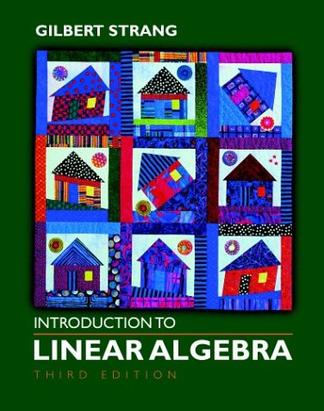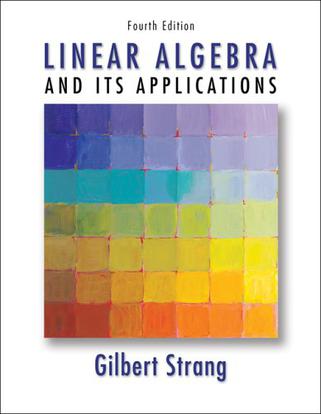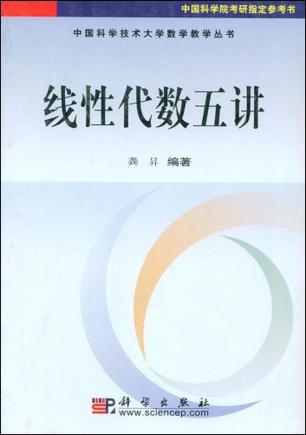-

线性代数(第四版)
【内容简介】 本书第四版仍由同济大学应用数学系骆承钦教授承担修订工作。这次修订从教学角度进行仔细推敲,增加了部分内容,增加了习题,使内容和系统更加完整,也便于教学。 本书内容为:行列式、矩阵及其运算、矩阵的初等变换与线性方程组、向量组的线性相关性、相似矩阵及二次型、线性空间与线性变换等六章,书末附有习题答案。 本书仍保留了第三版结构严谨、逻辑清晰、叙述简明、例题较多等优点,可供高等工科院校各专业使用,也可供科技工作者阅读。 【目录信息】 第一章 行列式 1.二阶与三阶行列式 2. 全排列及其逆序数 3.N阶行列式的定义 4.对换 5.行列式的性质 6.行列式按行(列)展开 7.克拉墨法则 习题一 第二章 矩阵及其运算 1.矩阵 2.矩阵的运算 3.逆矩阵 4.矩阵分块法 习题二 第三章 矩阵的初等变换与线性方程组 1.矩阵的初等变换 2.初等矩阵 3.矩阵的秩 4.线性方程组的解 -

线性代数
《线性代数》是作者主讲的国家级精品课程“线性代数”所使用的教材。适合作为大学本科数学类专业线性代数(或称“高等代数”)课程的教材,也可作为各类大专院校师生的参考书,以及关心线性代数和矩阵论知识的科技工作者或其他读者的自学读物或参考书。《线性代数》具有如下特点:1.不是从定义出发,而是从问题出发来展开课程内容,引导学生在分析和解决这些问题的过程中将线性代数的知识重新“发明”一遍,貌似抽象难懂的概念和定理也就成为显而易见。2.“空间为体,矩阵为用”,自始至终强调几何与代数的相互渗透。3.不板着面孔讲数学,努力采用生动活泼、学生喜闻乐见的语言。 -

Introduction to Linear Algebra, Third Edition
-

Linear Algebra and Its Applications, 4e
Renowned professor and author Gilbert Strang demonstrates that linear algebra is a fascinating subject by showing both its beauty and value. While the mathematics is there, the effort is not all concentrated on proofs. Strang's emphasis is on understanding. He explains concepts, rather than deduces. This book is written in an informal and personal style and teaches real mathematics. The gears change in Chapter 2 as students reach the introduction of vector spaces. Throughout the book, the theory is motivated and reinforced by genuine applications, allowing pure mathematicians to teach applied mathematics. -

线性代数五讲
本书从现代数学,尤其是模的观点来重新审视与认识线性代数,讨论了向量空间、线性变换,在着重研究了主理想整环上的模及其分解后,来重新理解向量空间在线性算子作用下的分解,使读者从高-个层次上来认识线性代数。 本书适合理工科专业的大学生、研究生、教师以及数学爱好者使用。 -

Linear Algebra and Geometry
This book on linear algebra and geometry is based on a course given by renowned academician I.R. Shafarevich at Moscow State University. The book begins with the theory of linear algebraic equations and the basic elements of matrix theory and continues with vector spaces, linear transformations, inner product spaces, and the theory of affine and projective spaces. The book also includes some subjects that are naturally related to linear algebra but are usually not covered in such courses: exterior algebras, non-Euclidean geometry, topological properties of projective spaces, theory of quadrics (in affine and projective spaces), decomposition of finite abelian groups, and finitely generated periodic modules (similar to Jordan normal forms of linear operators). Mathematical reasoning, theorems, and concepts are illustrated with numerous examples from various fields of mathematics, including differential equations and differential geometry, as well as from mechanics and physics.